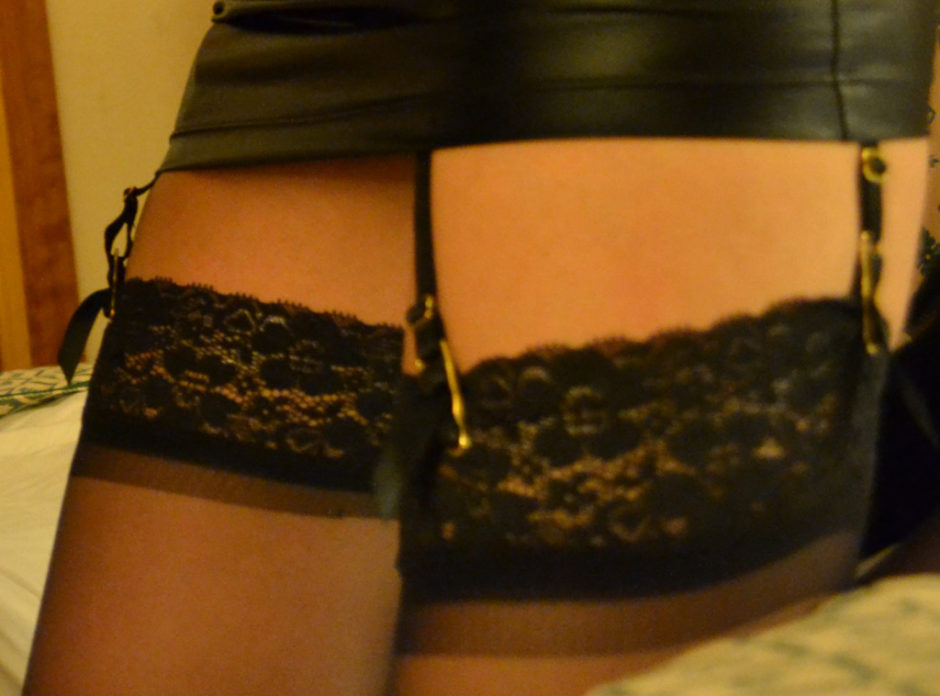Who’s Afraid of Black Sexuality? (5)
by Stacey Patton
Among scholars, much of the early work was done by historians, particularly black feminist historians, says Johnson. They brought out of the shadows the violation of black women under slavery—and the women’s response to it. They discussed the ways black women had kept their sexual lives private throughout history, to protect themselves against racism. In medical and literary studies, theorists like Evelyn M. Hammonds, Hortense J. Spillers, and Claudia Tate drew on psychoanalysis to understand the psychosexual dynamics of that privacy. Other scholars dealt with the emasculation of black men through lynching. But many early studies of the period focused on black sexuality as something that whites violated, suppressed, or exaggerated to justify discrimination. Few said anything about black sexual agency, pleasure and intimacy, or same-sex relationships.

And the reason that those might be explored as a category separate from human sexuality in general—without employing what Darieck Scott calls “essentially racist logic”—is the enduring history of black bodies, living under an exploitative and objectifying gaze.
In the early days, however, black nationalists and segments of the civil-rights movement accused black feminists of diverting attention from the urgent work of eradicating racism and restoring black manhood. Others objected that, for example, Alice Walker’s depiction of incest reinforced stereotypes about dysfunctional black masculinity.
“It’s easy for people to forget all the hostility,” says Spelman’s Guy-Sheftall. That history made it more difficult to include sexuality discourse in black studies as the field developed, she says.
It was in the late 1980s that queer studies began to make its mark in black studies. In 1986 came the publication of In the Life, an anthology of writing by black gay men, edited by Joseph F. Beam, an African-American gay-rights activist who died of an HIV-related illness in 1988. “The bottom line is this: We are Black men who are proudly gay,” he famously declared. And when Beam wrote that he wanted the truth to be told instead of watered-down versions of black life that excluded people like him, queer scholars heeded his call.
In 2000, frustrated by what he saw as silence about race in queer studies, Northwestern’s E. Patrick Johnson organized the first black queer academic conference, at the University of North Carolina at Chapel Hill, with Mae G. Henderson, who is straight. “I understood that identity is something that is created,” Johnson says. “Race might be an invention, but racism is not. It’s very real, and white gay men didn’t get that. They didn’t have to, because they are white men.” The conference drew 400 attendees, many of them graduate students who, he says, “came seeking affirmation of the research they wanted to do.”
The time was finally right. Younger scholars had grown up exposed to work by black LGBT writers and filmmakers like Marlon Riggs, Essex Hemphill, and Melvin Dixon. They had taken courses in gender studies and queer theory in college and were ready to see sexuality as a performance, a social construct, a varied phenomenon.
After Magic Johnson’s November 1991 news conference announcing that he was HIV-positive, black America could no longer insist that it was not at risk for the infection, which had been associated most closely with white gay men. In the years following, it became clear that AIDS activism would have to extend to communities of color being ravaged by the disease. The urgency of the AIDS crisis “really prompted folks to say that we cannot continue to proceed as if we don’t have a gay community within the black community, and we can’t proceed in the academy as if queer studies does not matter,” says Johnson. “The young folks are saying, ‘Let’s talk about sex, because people’s lives depend on it.'”
Those young people are also frustrated, and willing to say so. For decades, the “welfare queen” has been a standard cultural image, illustrated with oversexed addicts and promiscuous single mothers who bankrupt the country (and, in a recent iteration, drive up the federal deficit). “The visual for those stories has always been a black person,” says Celeste Watkins-Hayes, a black-studies professor at Northwestern. She recalls President Ronald Reagan’s stereotype of a welfare queen who used 80 names, 30 addresses, 12 Social Security cards, and was collecting $150,000 worth of Medicaid, food stamps, and veterans’ benefits.
“Racial oppression is diminishing and limiting,” Watkins-Hayes says. “Black-sexuality studies is about being liberatory, reinforcing, and life-affirming. Those two tensions end up making for fruitful scholarship. The confluence of those ingredients has led to a deliberate and clear articulation of a subfield called black sexuality studies.”
To be continued, part 6 click here
